Artistic Paws: 14 Famous Paintings Celebrating Dogs Through the Ages
-
Top 14 Dog Artworks Over the Centuries
- 1. Cave Canem Mosaic
- 2. 'Friend In Need' by Cassius M. Coolidge
- 3. The Dog by Francisco Goya
- 4. Andy Warhol's 'Portrait of Maurice'
- 5. 'A Jack in Office' by Sir Edwin Landseer
- 6. George Romney, 'Lady Hamilton as Nature'
- 7. Couple of Foxhounds by George Stubbs
- 8. Edward Munch's 'Head of a Dog'
- 9. Edouard Manet's 'King Charles Spaniel"
- 10. Norman Rockwell's 'Good Friends'
- 11. Berthe Morisot's 'Julie Manet and her Greyhound Laertes' by Berthe Manet
- 12. Mary Cassatt's 'Little Girl In A Blue Armchair'
- 13. Jean-Leon Gérome, Diogenes
- 14. Paul Gaugin's Arearea
- Final Words
Dogs have the unique status of the most beloved animals. No wonder why. They are well-known for their affection and dedication. They accomplish different roles. They can be watchful guardians or cherished family pets. Some dogs even undergo training to help police or rescue operations.
Canine enthusiasts all over the globe hold these faithful friends in high regard. People want to recognize their longstanding bond with these unique pets. Artistic representations of dogs showcase their timeless virtues as symbols of loyalty and fidelity. Over the ages, dogs have consistently been depicted to show heartfelt bonds and strong commitment.
Top 14 Dog Artworks Over the Centuries
Honoring a dog through artwork is a great gesture of appreciation, right? Renowned artists in the art world, such as Pablo Picasso, have dedicated their paintings to their four-legged friends. In this way, they enriched the artistic landscape and showed appreciation to their pets.
During the Renaissance, a lot of artists found inspiration in dogs. They showcased the profound relationships, touching emotions, and endured faithfulness these pets represented.
Let's have a look at some of the most exciting dog-themed artworks that stand out through the course of history.
1. Cave Canem Mosaic
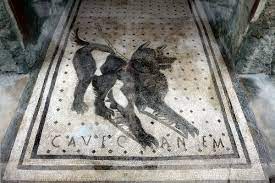
Intriguingly, one of the earliest artistic representations of a dog isn't in the form of a painting but a mosaic, termed the "Cave Canem Mosaic." This piece was discovered in the House Of The Tragic Poet in Pompeii and is estimated to date back to the 1st century BC.
This mosaic presents a formidable dog with the words "Cave Canem" inscribed, which means 'Beware Of The Dog.' Art enthusiasts theorize that this mosaic had a functional purpose, akin to our modern-day 'Cave Canem' signs, alerting visitors to the presence of a dog.
The artist responsible for the iconic 'Cave Canem' remains a mystery. However, the mosaic offers insights into the dynamic between ancient Romans and their canine companions. Beyond being hunting partners, dogs in ancient Rome were seen as vigilant protectors, safeguarding their owners from potential threats.
2. 'Friend In Need' by Cassius M. Coolidge

'friend In Need' 1903 By Cassius M. Coolidge
Cassius Marcellus Coolidge's 'A Friend in Need', often referred to as 'Dogs Playing Poker,' is one of a collection of sixteen canvases titled the 'Poke Game' series. These stand out as some of the most recognized artworks spotlighting dogs.
'Friend in Need', unveiled in 1903, is a pinnacle in canine-centric art. When discussing iconic dog paintings, this piece inevitably comes to mind. While 'Dogs Playing Poker' might seem a straightforward title, many miss the deeper narrative within.
The artwork humorously depicts a dog discreetly handing a card to a fellow player, attempting a sly trick to secure victory. This cheeky detail adds a layer of humor to the already amusing scene!
3. The Dog by Francisco Goya
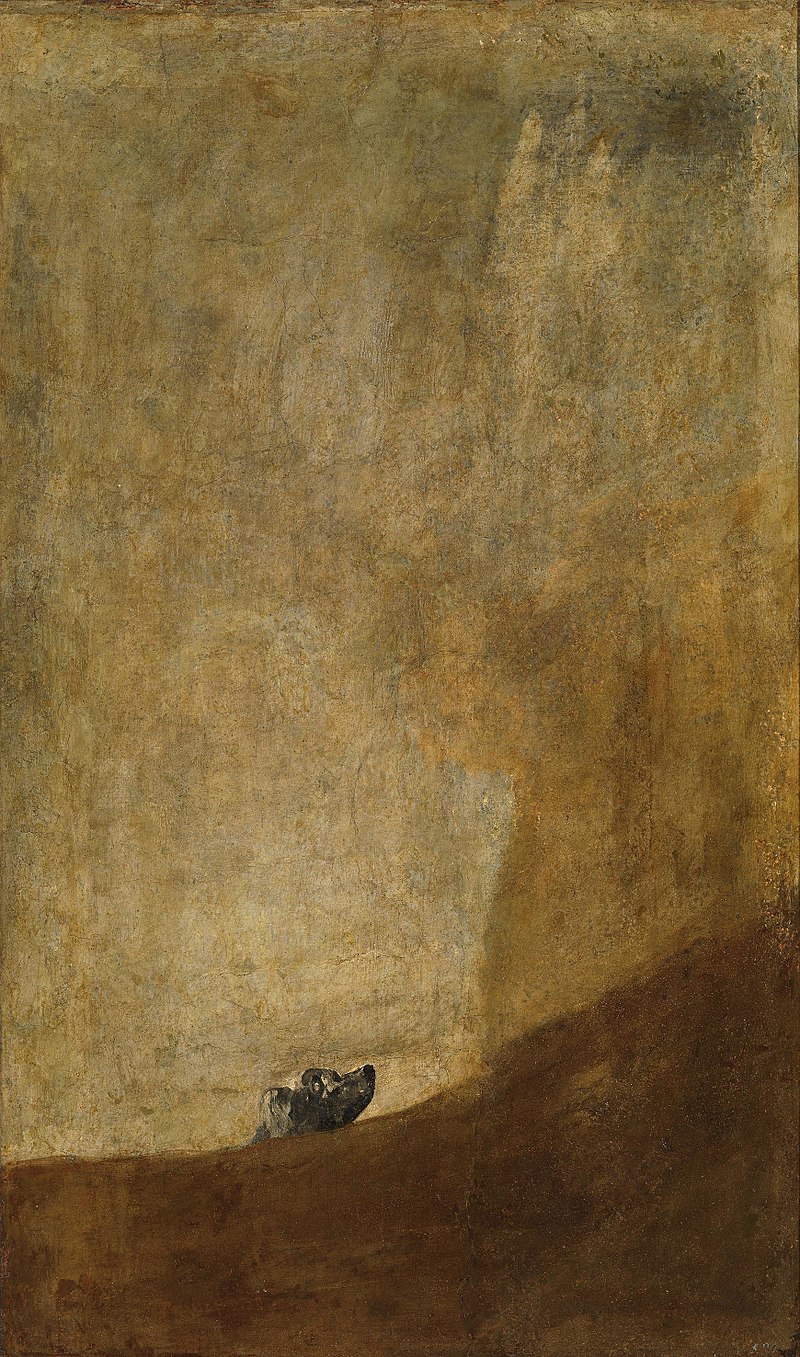
Francisco Goya, a celebrated Spanish artist, crafted one of his most memorable pieces, "The Dog", in 1823. This artwork is an excellent contribution to dog-themed art. Now, it’s housed at the Museo del Prado in Madrid, Spain.
The overall minimalist design of this painting is split into 2 sections. The bottom of the painting shows only the head of the dog. Its gaze goes upwards, straight to a fancy, enigmatic reddish sky.
This painting is quite simple when it comes to the elements. On the other hand, it masterfully conveys the solitude of the dog. Nobody knows the true intent of this painting. Up to this day, it remains a mystery. Many art critics have made various interpretations of this artwork over the years.
4. Andy Warhol's 'Portrait of Maurice'
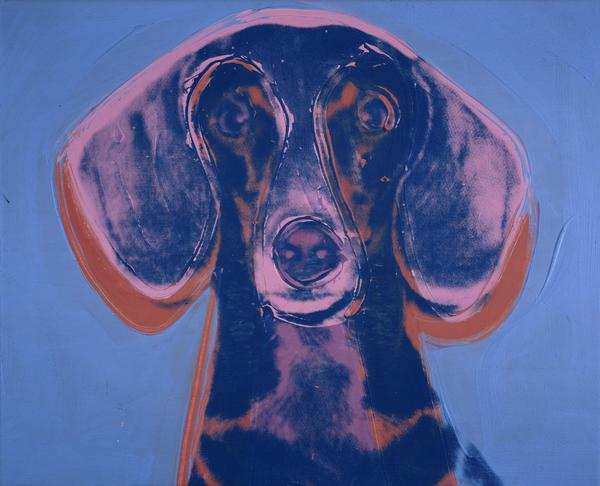
Andy Warhol is considered to be an iconic figure of 20th-century pop art. He is famous for his unique talent and approach. In 1976, he created 'Portrait Of Maurice' in his signature style. It became one of his masterpieces.
While Warhol frequently depicted celebrities and high-profile figures, he also undertook private commissions. One such project was "Maurice's Likeness", which has since become a hallmark of his portfolio. The subject, Maurice, was a cherished Dachshund belonging to Gabrielle Keiller.
Upon Keiller's donation of her art collection to the National Gallery Scotland, 'Maurice's Likeness' became the inaugural Warhol piece to grace its halls.
5. 'A Jack in Office' by Sir Edwin Landseer
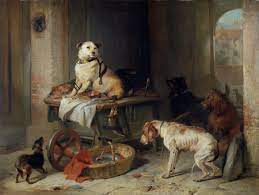
When talking about canine-centric art, Edwin Landseer's 'A Jack in Office' is a masterpiece that demands attention. Completed in 1833, this piece is among his initial creations.
The artwork is ingeniously crafted with layers of meaning. It narrates a unique tale. As some might be aware, the term 'Office Pooch' historically hinted at bureaucratic inefficiency.
In the canvas, a robust Jack Russell Terrier proudly occupies a table, while emaciated dogs nearby yearn for sustenance, gazing at him expectantly. This visual narrative strikingly mirrors the disparities and injustices societies often endure under certain governance or authoritative figures.
6. George Romney, 'Lady Hamilton as Nature'

George Romney, an esteemed British portraitist from the 18th century, is celebrated for his piece, "Nature's Lady Hamilton." Romney was famous for painting realistic portraits, and for this reason, he received commissions for portraits of celebrities at the time and members of royal families.
Art historians praise his 1782 masterpiece, "Lady Hamilton (As Nature)," for its brilliant use of light on a dark backdrop. This technique highlights the features of the woman in the painting.
Undoubtedly, the puppy, which the lady holds, is the most prominent feature of the painting. A young pup in the artwork engages the audience with a direct gaze, its expression filled with wonder and curiosity.
7. Couple of Foxhounds by George Stubbs

In 1792, George Stubbs unveiled a notable canine artwork titled "Couple of Foxhounds". It's speculated that Reverend Thomas Vyner, a foxhound aficionado, commissioned this piece from Stubbs.
Fox hunting was a prevalent sport in the mid-17th century, with many enthusiasts, including the reverend, often accompanied by their hounds. The depicted dogs seem engrossed in a silent conversation, alert to their surroundings. Art connoisseurs believe Stubbs aimed to convey a feeling of detachment through the dogs' posture. The elevated head and attentive ear of one dog suggest it's tuned into something beyond our view.
8. Edward Munch's 'Head of a Dog'
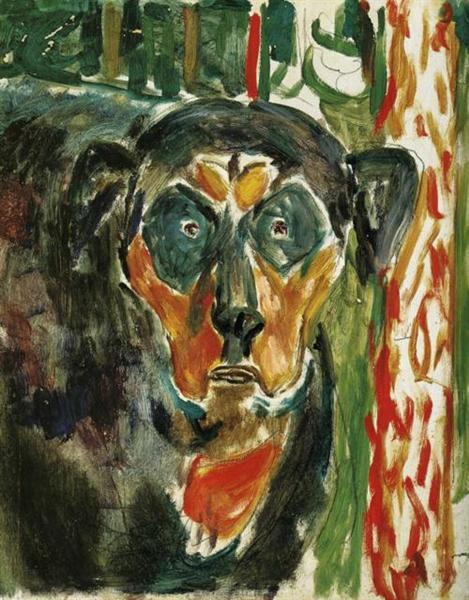
Edward Munch is frequently cited in conversations about the leading artists of the 20th century. His artwork, "The Scream," is a real proof of his genius. Paintings made by Munch often exhibit a unique touch. They have some surreal flare about them.
He created 'Head of a Dog' in 1930. It showcases the exaggerated face of a dog. This is one of his most successful artworks.
His sister and mother passed away. Edward found relief in the company of dogs. This artwork represents the face of his favorite dog.
9. Edouard Manet's 'King Charles Spaniel"

Edouard Manet was a pioneer in his era. He often drew inspiration from personal experiences and the world around him rather than focusing solely on spiritual themes. One masterpiece that emerged from his brush is 'King Charles Spaniel'. He crafted it in 1866. It quickly became one of the paramount dog paintings in the realm of art.
This artwork elegantly showcases a petite canine named after a royal lineage. It’s depicted perched on a plush, deep red cushion. It symbolizes nobility. No doubt it's a cherished pet. That’s why the attention to detail in capturing its fur is amazing.
10. Norman Rockwell's 'Good Friends'
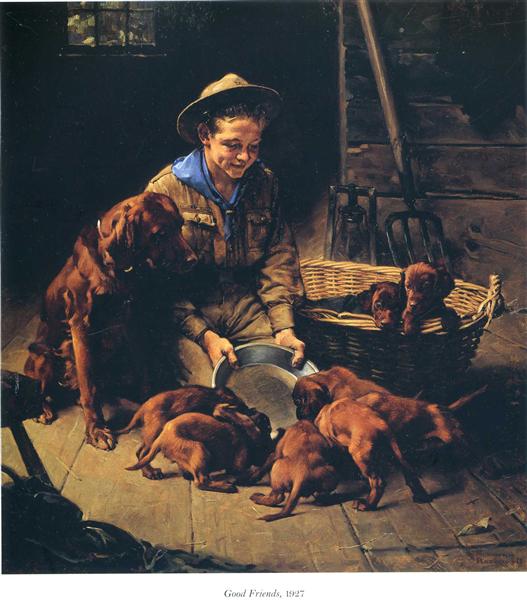
Norman Rockwell is an American painter who gained fame for his depictions of everyday American life. His creations often evoke a sense of nostalgia.
He finished his painting 'Good Friends' in 1927. It beautifully captures the sheer delight of pet ownership. It depicts a heartwarming scene. A robust don is sitting loyally beside a young lad. It attentively observes its litter approaching the vessel the child holds. Through this, Rockwell impeccably captures the essence of the human-canine bond.
11. Berthe Morisot's 'Julie Manet and her Greyhound Laertes' by Berthe Manet
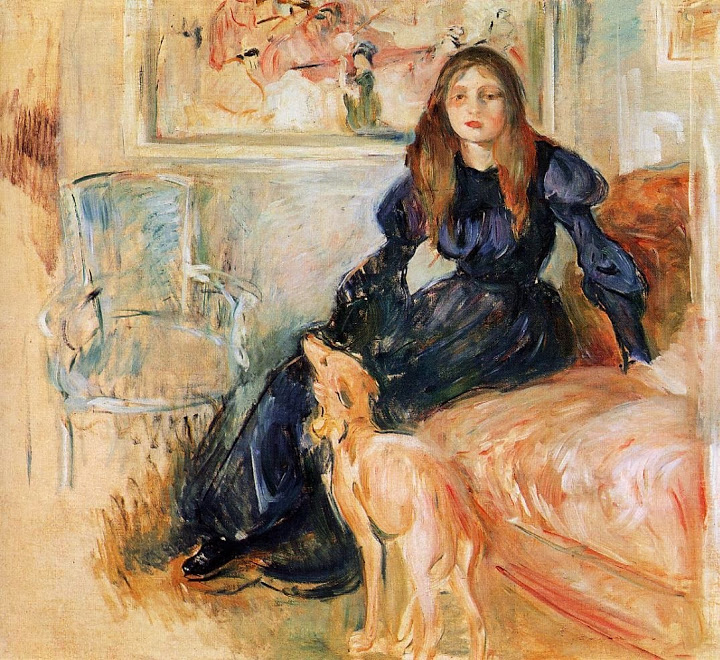
B. Morisot is one the foremost female talents of her era. She’s a maestro of the impressionist movement. She's famous for her vibrant palette and dynamic strokes. Morisot focused mainly on social tableaus or individual portraits. Her distinctive approach is characterized by vibrant hues and brushwork, solidifying her reputation. In 1893, she crafted 'Julie and Laertes'. This masterpiece depicts a young lady who embraces her greyhound, Laertes.
12. Mary Cassatt's 'Little Girl In A Blue Armchair'
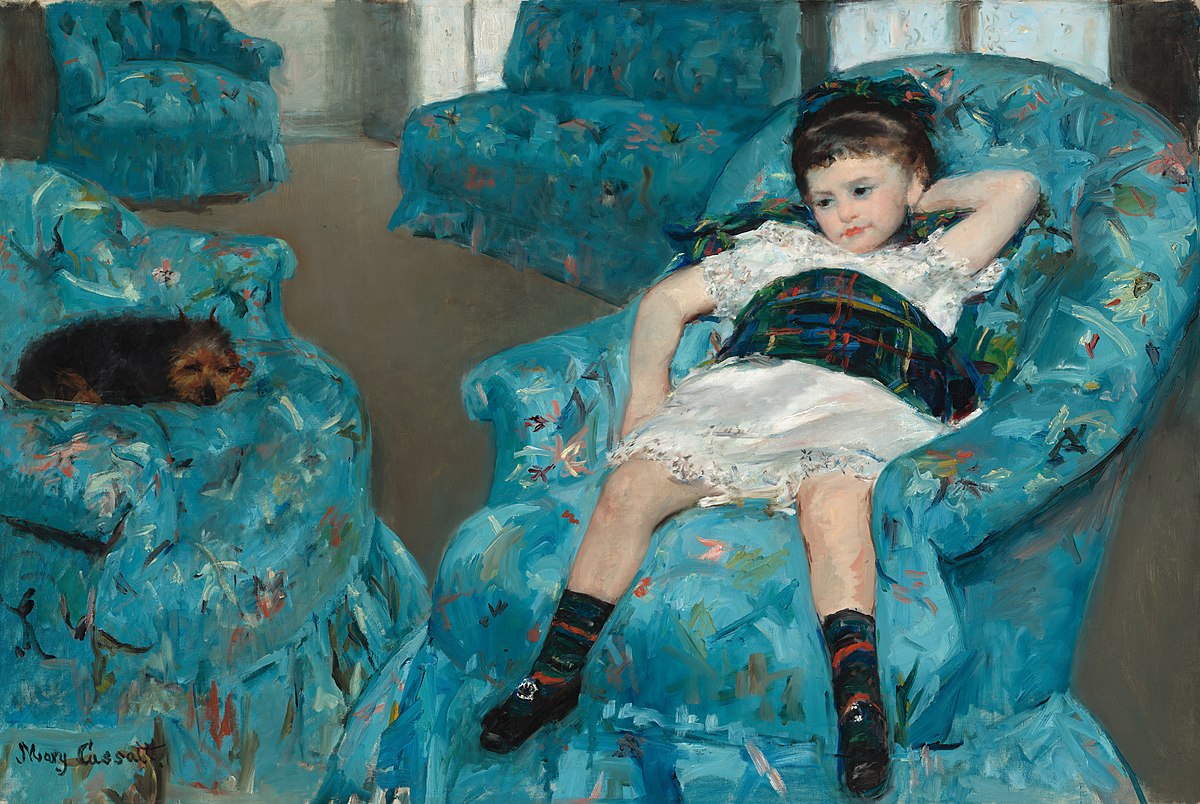
This iconic artwork stands out as a dog-centric painting. Cassatt finished the painting in 1878. Mary Cassatt is well-known for her exceptional technical skills in painting. She also boasts of compassion.
Anyone who felt as a kid that their parents' restrictions were unreasonable can relate to the child. You can sympathize with the young woman who appears to have thrown herself on the blue armchair out of frustration next to the one with a small dog lying down.
13. Jean-Leon Gérome, Diogenes
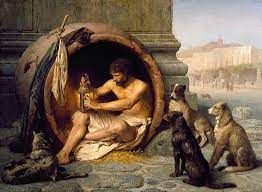
Jean-Leon Gerome also painted a famous dog picture in the 19th Century. It is called Diogenes. It was created in 1860 in the late nineteenth century, but it is reminiscent of neoclassical paintings.
The painting depicts the Greek philosopher Diogenes, accompanied by a group of dogs that are intently watching. Art enthusiasts believe the dogs represent those particularly interested in Diogenes' works and ideologies.
14. Paul Gaugin's Arearea
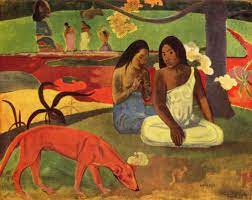
Paul Gaugin also completed a painting called 'Arearea' after his return from Tahiti. This painting was painted in 1892, a year after Gaugin returned from Tahiti.
Gaugin, in 'Arearea,' carefully blended fantasy and reality to create his world without losing credibility about how life in Tahiti is. You can see in the foreground a large, red dog standing near the center of the painting. It looks like it's sniffing the earth.
The painting did not attract much attention from the art lovers and public of the day. The way Gaugin portrayed the dog in his painting also disappointed many. Gaugin, however, considered 'Arearea' one of his best works and purchased it for himself in 1895.
Final Words
Paint their fur with Safe Paints, or dress them up in cute costumes.
You can decorate their home by hanging a few of these stunning works of dog art from throughout history. You can create your own portrait or use an application to turn a picture of your dog into a portrait. Here are some of the best ways to pay tribute to your dog, who gives you unconditional loyalty and love.
No Comments Yet...